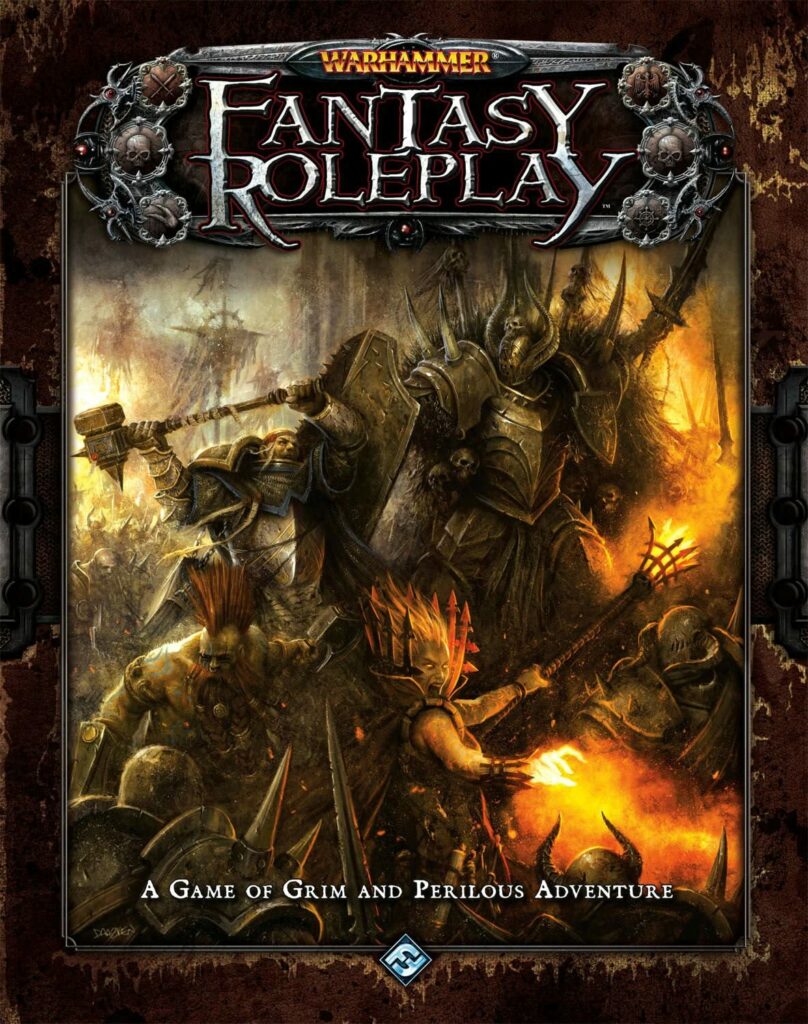I started to feel that I didn’t know roleplaying games well enough so I came up with the plan to read a roleplaying game corebook for every year they have been published. Selection criteria is whatever I find interesting.

For such a classic fantasy roleplaying game, Warhammer Fantasy Roleplay has a convoluted publishing history. The first edition, in 1986, was published by Games Workshop, the second in 2004 was designed by Green Ronin and published by Black Industries, the third released by Fantasy Flight Games and the fourth, built on the first and second editions, by Cubicle 7 in 2018.
The version I read was the 2009 one, the 3rd edition. It’s the best mainstream fantasy roleplaying game I’ve seen.
Fantasy Flight Games is primarily a boardgame publisher and there’s a lot of influence from big board games in how Warhammer Fantasy Roleplay is presented. Combat actions, spells and character classes are all represented on cards to they’re easy to reference and access during play. The books are very visual, with the kind of visualization of play aids and examples you commonly see in board game rulebooks but rarely in roleplaying game books.
Historically, a lot of roleplaying game design has gone into the “front end” of player facing mechanics, such as combat, character creation and so on. GM tools have often received less attention. (Of course, nowadays there are entire schools of design such as Powered by the Apocalypse with good GM tools.) Warhammer Fantasy Roleplay 3rd Edition feels like a trailblazer in that sense, supporting the player-facing mechanics with a suite of “back end” systems for the GM to use.
The best of these is the progress tracker, a tool that can be used to measure the progress of various game events. A simple use is to track a chase scene but it also works for more nebulous goals, such as the encroachment of a cult. It’s a clear precursor of the clocks that are used to excellent effect in Blades in the Dark.
The focus on usability is visible in the presentation. Instead of one big book there are four smaller ones so multiple people can consult them at the same time. The progress tracker is built out of the same components used by a mechanic that allows characters to assume a conservative or reckless fighting stance.
Despite the board game influences, Warhammer Fantasy Roleplay feels less combat heavy than D&D. There are investigation and social scenes as well and it’s not assumed the characters will simply spend their time killing monsters in a dungeon.
The example scenario is one of the best I’ve seen in any corebook, involving the characters hired to help in the move of a nobleman and the troubles encountered at his mew, remote estate. It points to the presence of working class people among the game’s career options. It’s possible that the party will consist of a boatman, a watchman and a ratcatcher. Instead of martial classes such as D&D’s fighter, which feel removed from any sort of social role, Warhammer’s combat classes are tied to war, violence and policing as they appear in its society.
Warhammer Fantasy Roleplay’s 3rd edition still feels fresh, over ten years since it was first published.